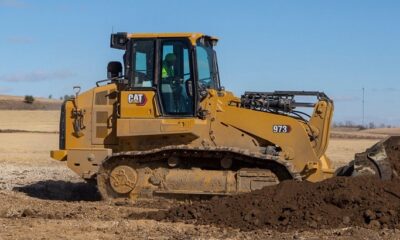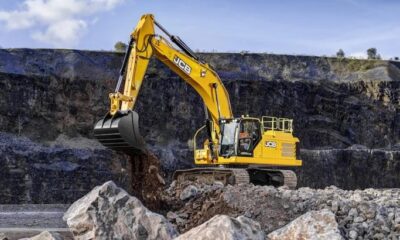Heavy Equipment
12 Popular Types of Construction Cranes
A quick list of the most common types of cranes.
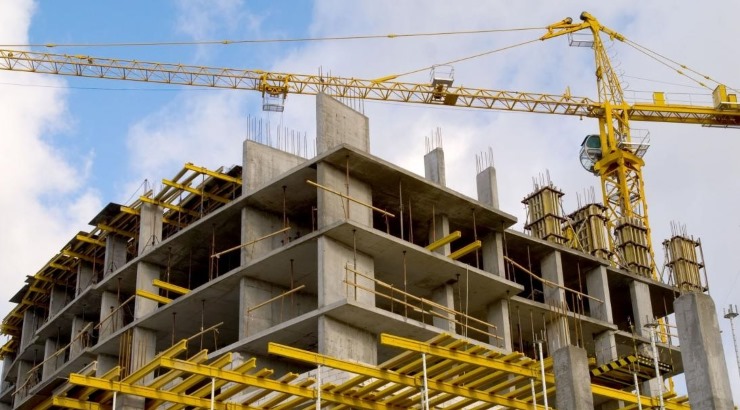
Construction cranes are powerful machines capable of lifting heavy loads.
The history of construction cranes dates back to 515 BC when the Greeks invented them to lift materials during the construction of the Greek temple.
Ever since their invention, different types of cranes have evolved in terms of designs and capabilities, thereby becoming a common feature in large construction projects.
Types of Construction Cranes
What are the two main types of cranes?
There are two main types of cranes: mobile cranes and static cranes.
A mobile crane is typically mounted on wheels or treads and can be moved from one site to another. A static crane is fixed to the ground or building to move loads along a fixed path.
The two types of cranes are subcategorized as follows: –
Mobile Crane
1. Truck-Mounted Crane
As the name suggests, these cranes are mounted on trucks. They consist of a carrier (truck) and a boom (arm) and are only moved to a construction site when needed.
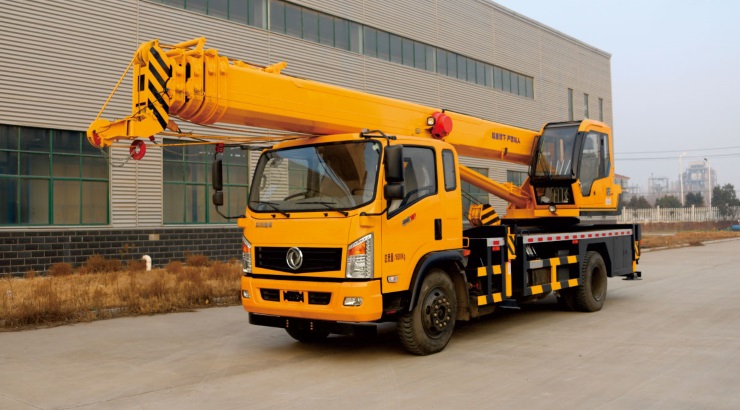
Truck-mounted cranes are fitted with outriggers for stabilizing the crane while working on site. They are mostly used for inspection, maintenance, and construction of bridges.
2. Crawler Crane
Crawler cranes are specially designed for heavy-load transportation at a construction site. Instead of wheels, crawlers are built on an undercarriage fitted with a pair of rubber tracks.
Though this design limits the crawler’s turning capacity, it helps the machine operate on soft soils without the risk of sinking.
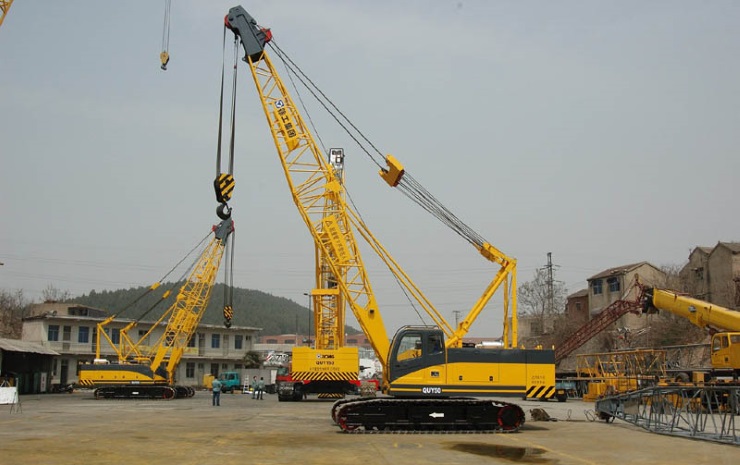
Some crawler cranes come with a telescopic arm that allows for an increase or reduction in size, which enhances their ability to operate in various terrains.
Due to their huge sizes, these construction cranes are ideal for long-term projects.
3. All-Terrain Crane
All-terrain cranes are designed to operate on both paved roads and rough terrain.
They are fitted with more wheels than standard vehicles for stability and to prevent overturning in rugged terrains.
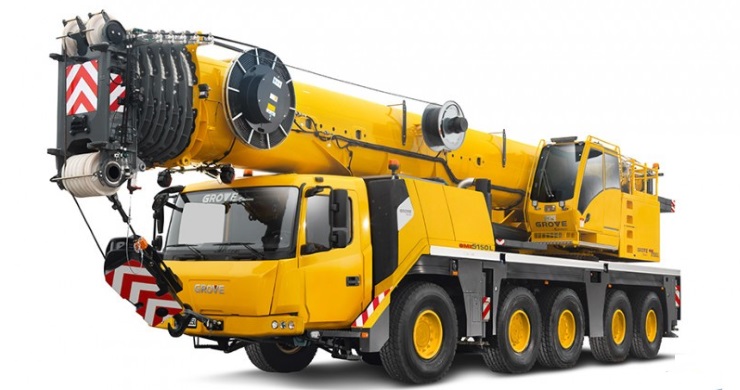
All-terrain cranes are often used instead of rugged terrain cranes and vehicle-mounted cranes to perform dual-purpose tasks.
4. Rough Terrain Crane
Rough terrain cranes are designed to operate in rough territories where ordinary truck-mounted cranes are not feasible.
They are built like crawler cranes and fitted with four rubber tyres instead of tracks.
RELATED: 35 Construction Equipment Names and Pictures
Rough terrain cranes are fitted with telescopic booms and outriggers to enhance stability and allow easier maneuvering in tight and rough areas.
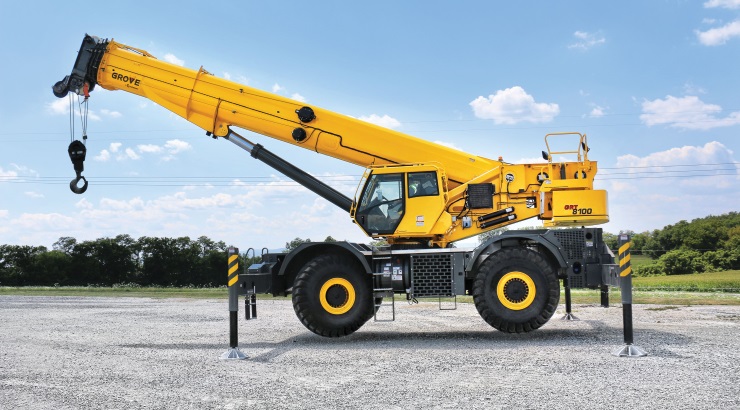
5. Carry Deck Crane
Carry deck cranes are an evolution of the pick-and-carry model that first came into use in the 1980s. These are small, four-wheeled machines that can rotate a full 360 degrees, allowing them to navigate around confined and open spaces.
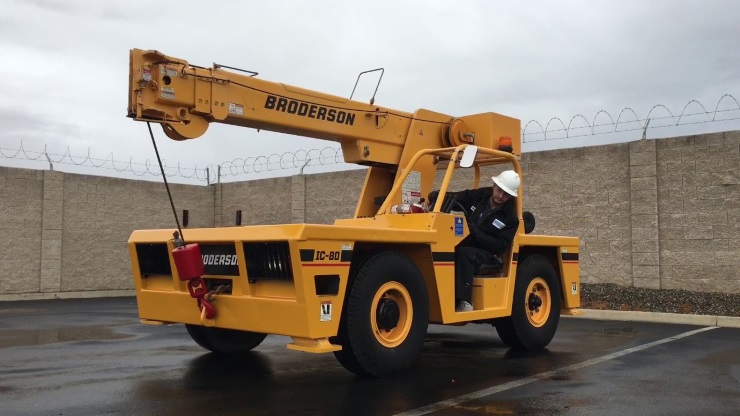
Carry deck cranes are ideal for lifting loads that require compact, low-profile cranes that can simultaneously maneuver in very tight spaces while clearing overhead obstacles.
6. Aerial Crane
Also known as flying cranes, aerial cranes are special types of helicopters used to lift loads in areas that are inaccessible by land, such as rooftops of skyscrapers, or sites away from roads.
Aerial cranes use long cables or slings to lift loads in an operation known as ‘longline,’ owing to the length of the cable used for carrying the load.
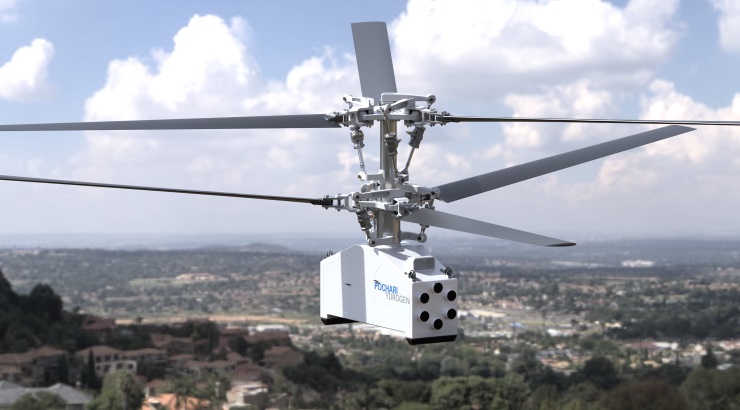
Aerial cranes came into use in the 1950s, but it was not until the 1960s that their usage took off in the construction industry. This was after the more powerful Sikorsky S-58 helicopters replaced the Bell 47, allowing the lifting of heavier loads.
7. Floating Crane
As the name suggests, floating cranes are positioned on the sea and used for the construction of ports and oil rigs. They operate like other construction cranes, except that they are used at sea.
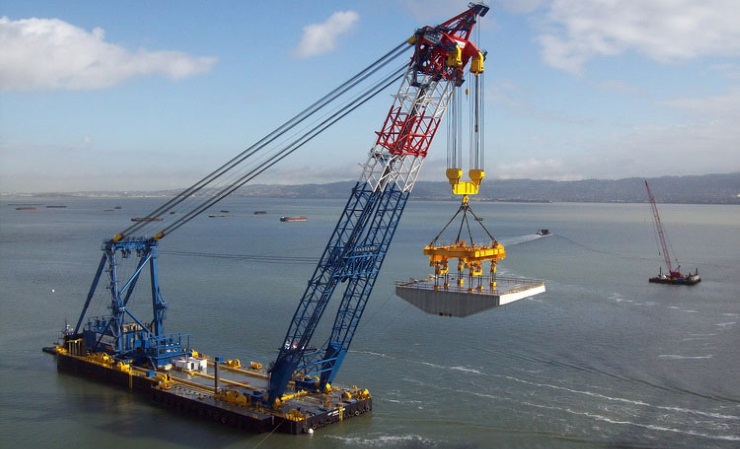
Floating cranes have an enormous lifting capacity, which makes them useful for retrieving sunken ships from the water. As of 2019, the world’s largest floating crane was Lanjing, owned by China National Offshore Oil Corporation through its subsidiary CNOOC.
Static Crane
8. Tower Crane
Tower cranes are powerful lifting machines fixed to the ground during the construction of skyscrapers. Typical tower cranes have a maximum unsupported height of 80 meters or higher if tied into the building as the structure rises around the crane.
A standard tower crane has a lifting capacity of 20 tons.
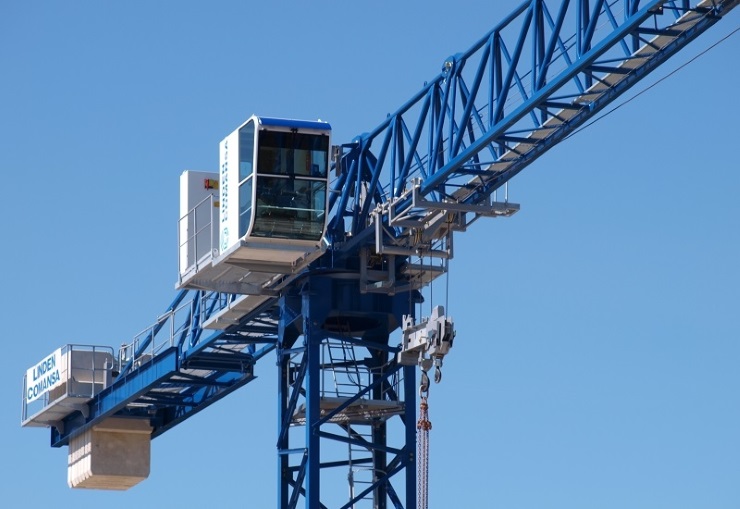
Tower cranes are built along with a building and rise alongside it. They are fitted to a strong concrete base and anchored by large bolts that are easily removed after the work.
Types of Tower Cranes
i) Hammerhead Tower Crane
This is a heavy-duty crane with a horizontal jib that rotates a full 360 degrees around a mast at a fixed level and a structure that resembles an upside-down “L.”
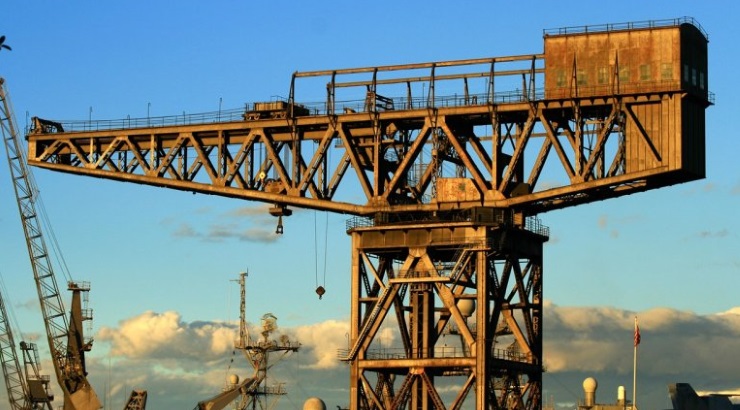
Hammerhead tower cranes are adapted for any job site lifting task and are reliable for accurate handling of loads.
These types of construction cranes can be exceedingly heavy and are assembled on site.
ii) Luffing Tower Crane
Luffing tower crane, also called a luffing-jib crane, is designed like a hammerhead tower crane except that the jib is interlaced and can be elevated or dropped in a motion known as luffing.
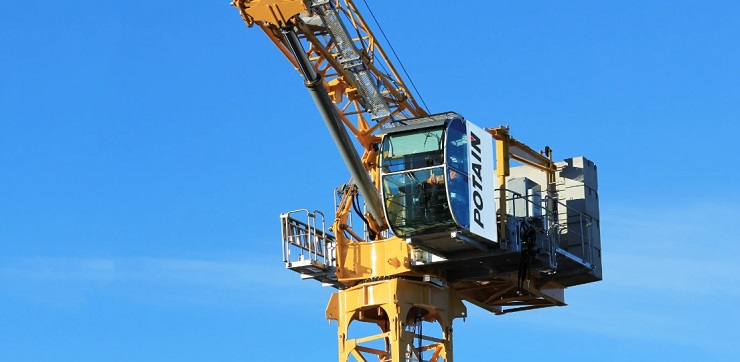
These types of cranes have the capacity to lift heavier loads than hammerhead tower cranes. They are ideal for congested sites or those with multiple cranes due to their small swinging radius.
iii) Self-Erecting Tower Crane
Self-erecting tower cranes are lightweight cranes that have a horizontal jib and a mast mounted to a ballast.
They are designed to fold and unfold to allow their erection and dismantling on site.
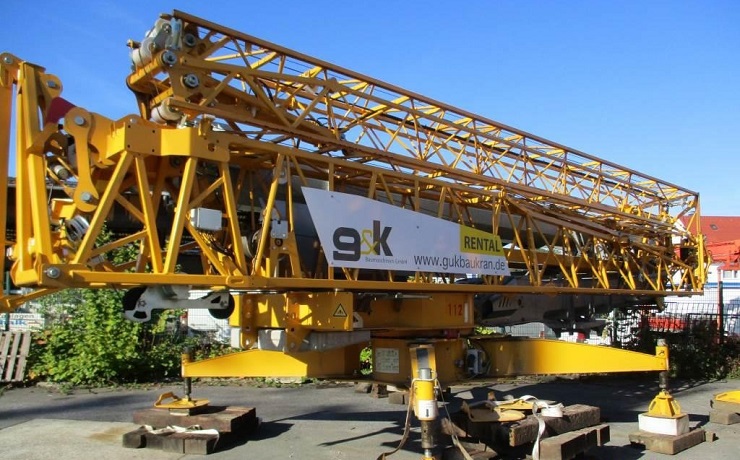
Unlike the above two types of tower cranes, self-erecting tower cranes have a much lower maximum load capacity, making them ideal for sites that do not require heavyduty cranes and those with frequent erection and dismantling of equipment.
9. Telescopic Crane
Telescopic cranes are equipped with a large boom (arm) in which several hydraulic cylinders are fitted, one inside the other, allowing the boom to grow or shrink like a telescope.
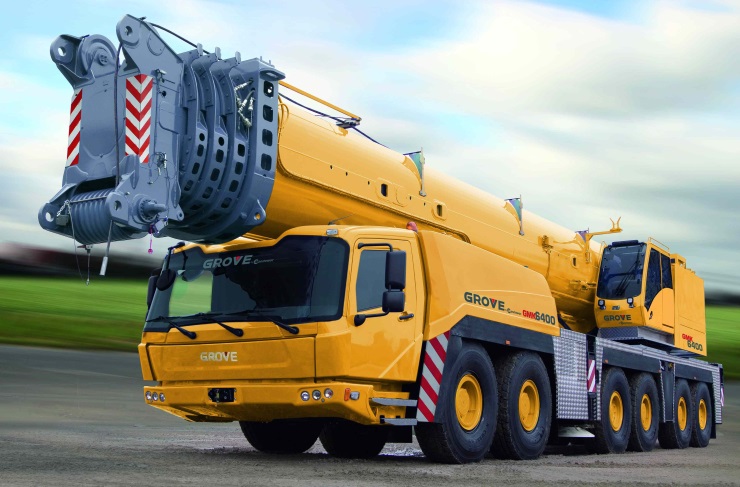
Most telescopic cranes are mounted on tracks to allow movement to and from different sites. This makes them ideal for short-term construction jobs, such as the installation of signal masts.
10. Telescopic Handler Crane
A telescopic handler crane is a forklift-like machine that is fitted with a boom (telescopic cylinder) that extends forward and upward from the vehicle. This makes it ideal for handling tasks such as installation of steel trusses on tall buildings.
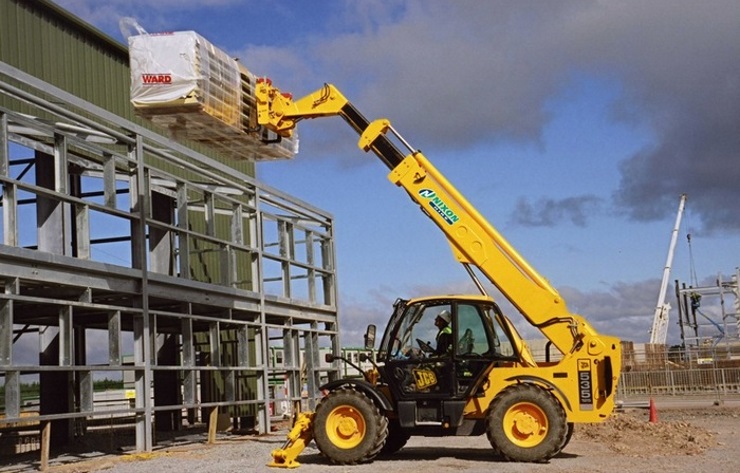
11. Bulk Handling Crane
A bulk handling crane is designed with an integral grab that enables it to lift bulk loads.
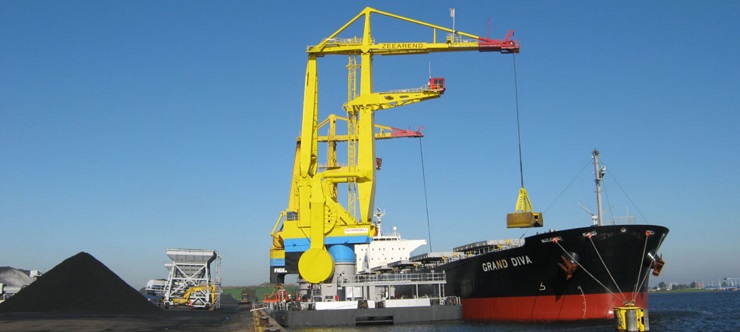
While most bulk handling cranes are dedicated to a single product, some cranes are fitted with several grabs to efficiently handle large volumes of diverse materials.
12. Bridge/Overhead Crane
Overhead cranes are permanent structures installed on site to perform repetitive tasks. They have a horizontal beam that moves horizontally up and down a runway above a site.
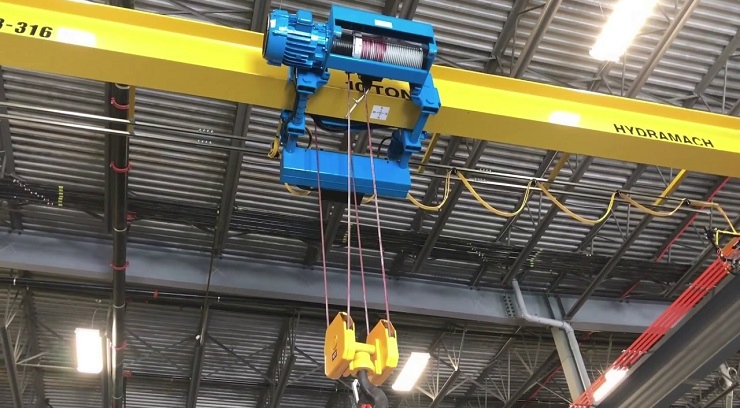
A trolley and hoist travel from one side to the other along the bridge beam to lift and lower loads throughout a rectangular bay. They are used to enhance safety and efficiency within a site.
Types of Overhead Cranes
i) Gantry Crane
A gantry crane is a type of overhead crane with a single or double beam formation supported by two A-frame steel legs that move on a track to carry loads from one area to another.
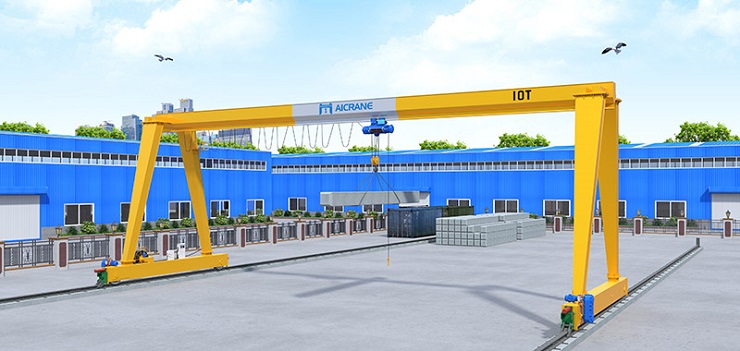
They are mainly used in projects that do not require an overhead runway system for the crane’s movement.
ii) Jib Crane
A jib crane is a hoist with a jib arm (horizontal beam) that is typically mounted on either a wall or floor-mounted pillar with a movable hoist that lifts, positions, or lowers a load.
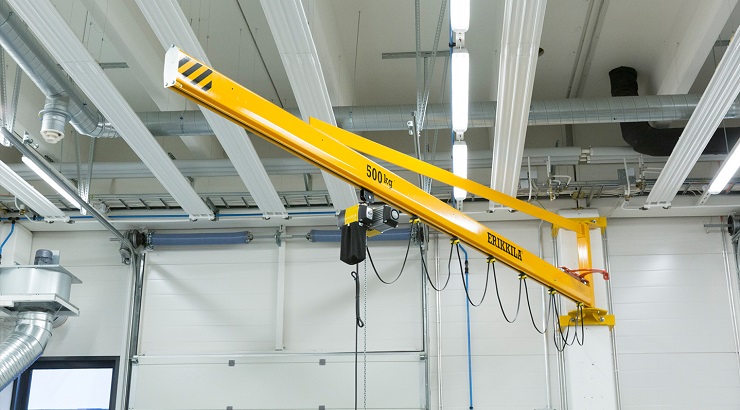
These types of cranes are often used on smaller jobsites for repetitive lifting operations.







